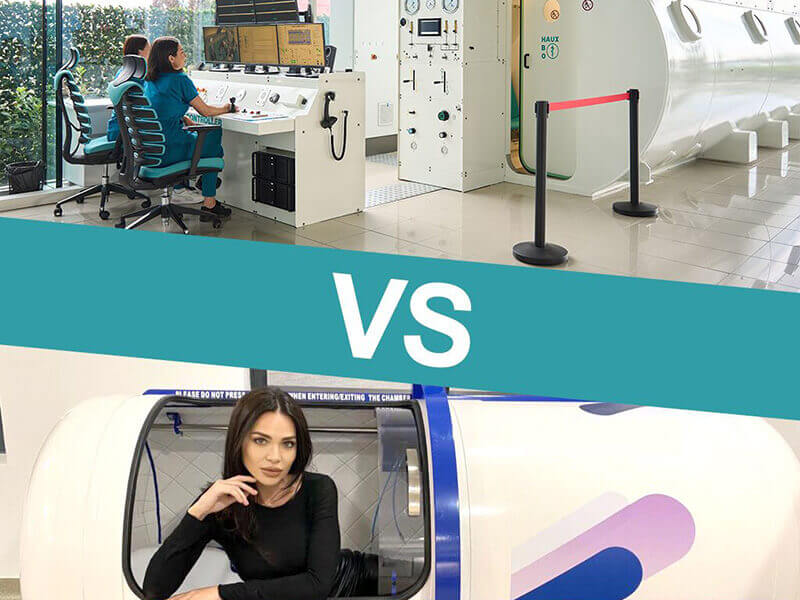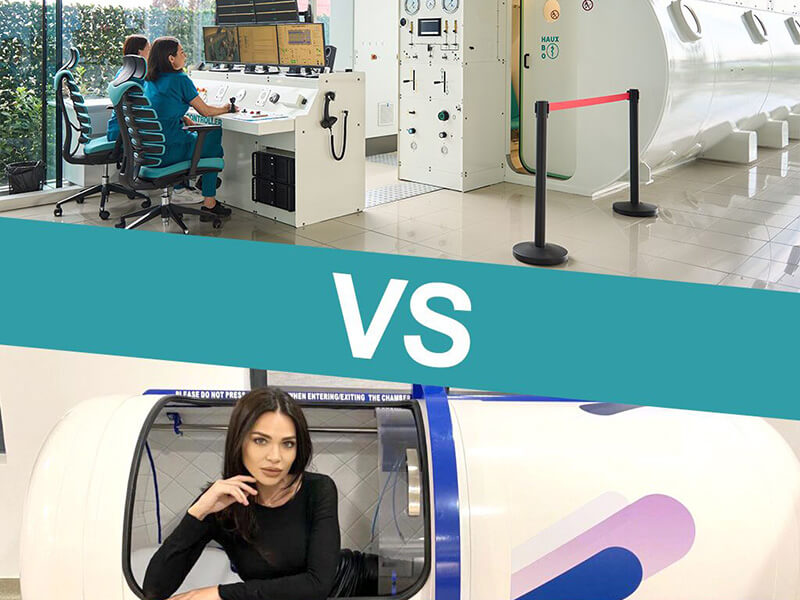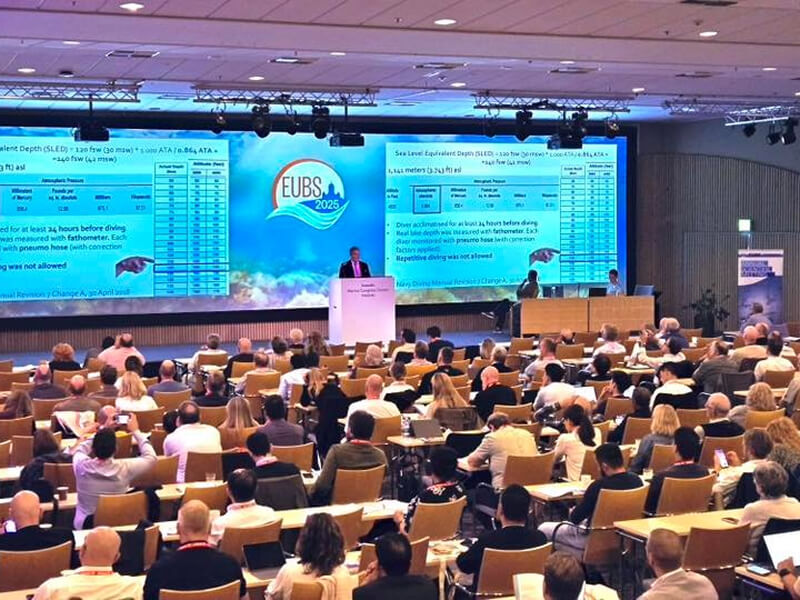
Article reviewed by: Dr. Sturz Ciprian, Dr. Tîlvescu Cătălin and Dr. Alina Vasile
Hyperbaric Therapy: An Alternative or Conventional Treatment?
- What is Hyperbaric Therapy?
- Hyperbaric Therapy as a Conventional Treatment
- Hyperbaric Therapy as an Alternative Treatment
- Medications Have Alternative Uses Too
- Not All Hyperbaric Chambers Are Medical Devices
- Conclusion
Hyperbaric therapy, also known as hyperbaric oxygen therapy (HBOT), has become increasingly popular in recent years due to its potential benefits in treating various conditions.
The Nobel Prize in Medicine 2019, awarded for research on how cells detect and respond to changes in oxygen levels, has generated a new wave of interest and development in hyperbaric therapy, building on decades of experience in this field.
However, there seems to be some confusion regarding the classification of this therapy: is it an alternative treatment or does it belong to conventional medicine? In this article, we will explore the characteristics, uses, and therapeutic context of hyperbaric therapy to answer this question.
What is Hyperbaric Therapy?
Hyperbaric therapy, also known as hyperbaric oxygen therapy, is a medical treatment that involves exposing the patient to pure oxygen (100%) in a special chamber called a hyperbaric chamber, where the pressure is higher than the normal atmospheric pressure. This increased pressure allows for better dissolution of oxygen in the blood and tissues, accelerating healing and regeneration processes.
When administered in accredited medical centers, the treatment follows well-established protocols and treatment schemes developed by international medical organizations such as the Undersea and Hyperbaric Medical Society (UHMS) and the European Committee for Hyperbaric Medicine (ECHM).
Hyperbaric Therapy as a Conventional Treatment
Conventional treatment refers to traditional medical treatments based on scientific evidence and used by healthcare professionals to treat diseases and conditions. Hyperbaric therapy (HBOT) is recognized by many medical institutions and international organizations, such as the U.S. Food and Drug Administration (FDA), for the treatment of specific conditions. Its use in the medical context is well-documented and based on rigorous research and thousands of clinical studies.
Furthermore, hyperbaric therapy is often administered in hospitals and clinics in countries with well-developed healthcare systems, such as Austria, Germany, France, and Italy, under the supervision of specialized physicians. This underscores its status as a conventional medical treatment.
In these countries, hyperbaric therapy is included in standard treatment protocols for certain conditions and is often covered by public or private health insurance, reinforcing its status as a conventional therapy.
In the United States, the FDA has approved hyperbaric therapy for 14 conditions, including decompression sickness, carbon monoxide poisoning, chronic wounds, and diabetic ulcers. In Europe, the use of hyperbaric therapy is approved for an even wider range of conditions, with approximately 30 recognized indications in most countries.
The European Committee for Hyperbaric Medicine also categorizes conditions recommended for hyperbaric oxygen therapy into 3 categories:
| Level 1: Strictly Recommended | Level 2: Recommended | Level 3: Optional | Other Indications: |
|---|---|---|---|
|
|
|
|
| Level 1: Strictly Recommended |
|---|
|
| Level 2: Recommended |
|---|
|
| Level 3: Optional |
|---|
|
| Other Indications: |
|---|
|
Hyperbaric Therapy as an Alternative Therapy
On the other hand, hyperbaric therapy is sometimes used as a treatment for conditions where scientific evidence is still insufficient. For instance, recent research suggests that hyperbaric therapy may be beneficial in treating autism, migraines, depression, and other neurological conditions. Although there are studies indicating potential benefits in these areas, the medical community has not yet reached a consensus, and thus these uses are considered alternative or complementary.
There are also cases where there is sufficient study and evidence for some conditions, but they have not yet passed the FDA approval process, which can take up to 12 years. An example of such a condition is grade 1 and 2 avascular necrosis, where the chances of healing with hyperbaric therapy are over 80%. Until recently, this condition had very few non-invasive treatment methods, most of which were of limited efficacy.
Moreover, the use of HBOT for these unapproved conditions is not covered by public health insurance, highlighting its nature as an alternative therapy in these cases. It is important to note that, regardless of the condition, hyperbaric therapy is considered a safe and reliable treatment, with very few contraindications or risks of complications, and side effects are generally minor.
Information provided by the Food and Drug Administration (FDA) and numerous scientific studies show that when applied correctly in accredited medical centers, hyperbaric therapy can be considered one of the safest medical treatments available.

Medications Also Have Alternative Uses
In fact, alternative uses are a common practice in the case of medications as well. Many well-known drugs are frequently used for conditions different from those for which they were initially approved. This practice, known as "off-label use," is quite common in medicine.
The number of well-known drugs with alternative (off-label) uses is quite large. It is estimated that globally, about 20-25% of all medical prescriptions are for off-label uses. This could mean that there are hundreds, if not thousands, of medications that are frequently used for conditions different from those for which they were initially approved.
A notable example is the common aspirin, a widely known and used medication initially approved for pain relief and fever reduction, which now has numerous off-label uses, including the prevention of heart attacks and strokes, prevention of preeclampsia, reduction of colorectal cancer risk, treatment of Kawasaki disease, and management of antiphospholipid syndrome.

Not All Hyperbaric Chambers Are Medical Devices
Hyperbaric chambers are divided into 2 categories: HBOT (medical) and mHBOT (non-medical). Although they may appear similar, the technical differences and medical benefits between the two can be significant. The main technical differences are related to the working pressure and the purity of oxygen used in the therapy.
With the rise of more light hyperbaric capsules (mHBOT), confusion regarding the classification of hyperbaric medicine as alternative or conventional therapy has increased. These capsules are often marketed for home use or in spa centers and do not adhere to the same rigorous medical standards as the barochambers in accredited medical centers.
Moreover, the confusion is amplified by certain medical clinics that purchase and promote non-medical mHBOT devices, which are considerably cheaper than medical HBOT chambers.
The emergence of these non-medical light hyperbaric capsules, coupled with the lack of strict regulation regarding their use and promotion, can create the impression that hyperbaric therapy is more of an alternative practice rather than one based on established medical evidence and protocols.
Conclusion
So, is hyperbaric therapy an alternative or conventional therapy? The answer depends on the specific context of its use. In the treatment of recognized conditions, such as decompression sickness or carbon monoxide poisoning, hyperbaric therapy is not only a conventional therapy but also a first-line indication, well-integrated into conventional medical practices. However, when used for conditions where scientific evidence is still insufficient, hyperbaric therapy may be considered an alternative therapy.
The most important thing is to ensure that the therapy is performed in an accredited medical center, which uses medical-grade hyperbaric chambers, pure medical oxygen, and follows well-established treatment protocols.
In conclusion, when used appropriately, hyperbaric therapy holds a special place in the medical landscape, being recognized and used both in conventional medicine and in alternative therapies, depending on the treated conditions and available scientific evidence.




